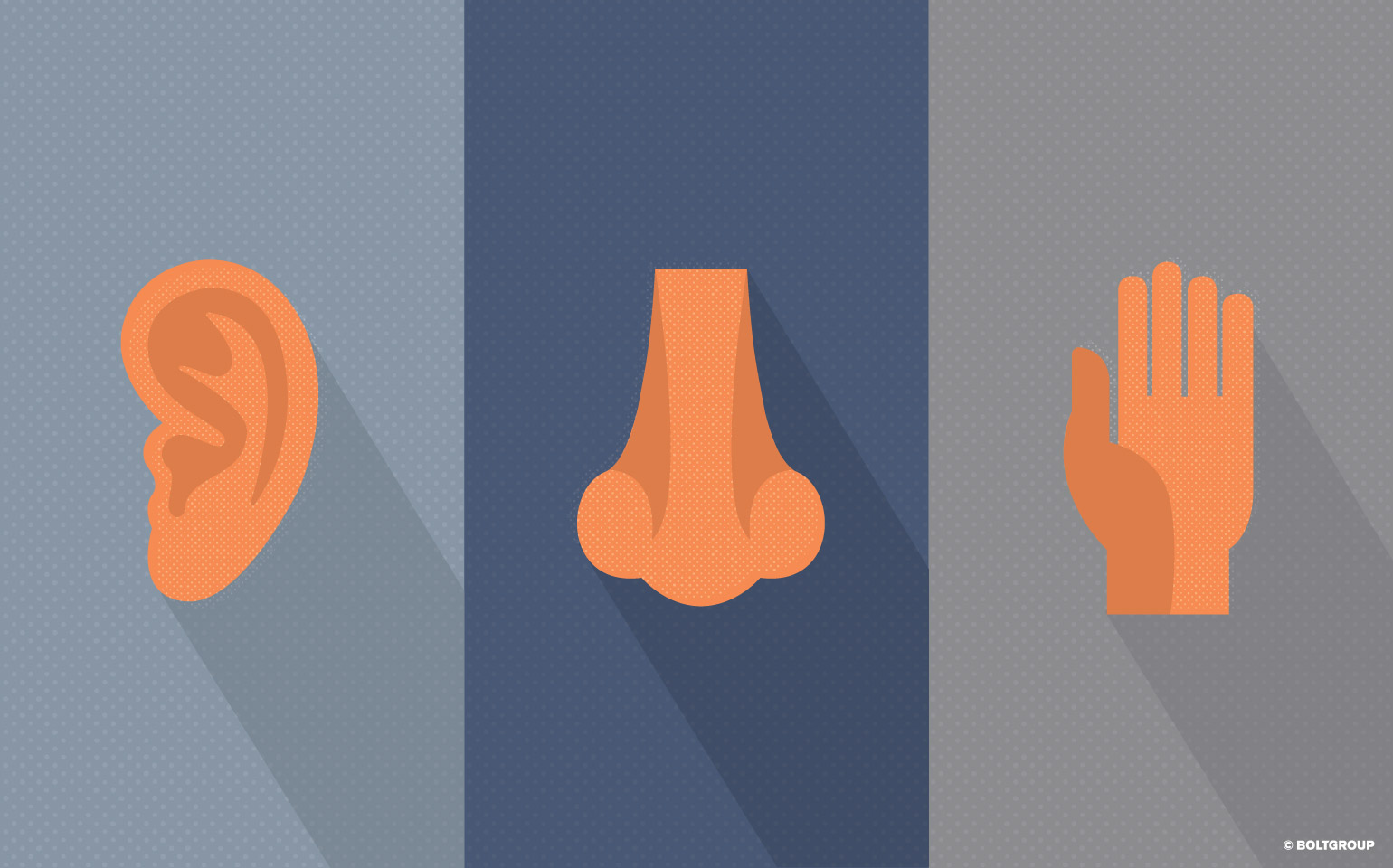Vacuum cleaners whine, microwaves beep, luggage feels smooth, and auto upholstery has that “new car” smell. These sensations help build a brand story in the minds of users. It’s called “intra-sensory perception”—the composite experience of the environment assembled from various inputs and entering through all the human senses. Sensations and memories influence how a customer experiences a product and brand. Every encounter between customer and product / brand becomes a part of their intra-sensory experience.
Retailers have known about intra-sensory perception for years. From Disney to Apple, retail stores create environments that entertain and inform. The entire experience—sounds and smells, the interplay of visual media and lighting, the kinesthetic sensation of space—are all designed to communicate the product / brand message.
Product designers also design for this total experience. To build a brand story and communicate the meaning of a product, we consider all sensibilities across all touchpoints. The squeaky packing material heard when removing a new computer from its box creates a negative sensation that’s logged in the customer’s mind. The smell of a new car during a test drive brings back good memories that blend with other perceptions to create a positive “story” in the mind of the customer. While sight dominates our sense of design, other senses like sound, touch, and smell contribute to the emotional connection a user has with a product and brand.
Sound
We can “design” sounds that denote key attributes of a product + brand—like durability, precision, strength, heft, or lightness. Product sounds can be divided into two types. Consequential sounds are generated by operating the product. Intentional sounds are added to the product. Both types have meaning to the user.
Through consequential sounds we know when the battery runs low on our power drill, when our vacuum cleaner gets clogged, or when a plastic lid didn’t quite click into place. Designers consider the material, shape, stiffness, load, energy, and lubricity of product parts to design the best sound. Car door sounds have long been associated with quality (or lack thereof). Car manufacturers have acoustical engineers dedicated to creating just the right sound—and just the right emotion—through the design of a door.
Intentional sounds help us operate microwave ovens and smartphones. The style, tone, intensity, and frequency of sound allow the designer to communicate with consumers in appropriate ways. And product sounds that mimic other sounds in our lives create memories and emotions useful in guiding the overall product / brand experience (like your mobile phone alarm sounds).
Touch
Imagine you’re lying on a velvet bench. Now imagine stretching out on a steel bench. The tactile sensation can make us feel safe and comfortable or annoyed and edgy. We recently designed a family of door pulls. The visual aesthetics were key. But the feel of the product was just as important in the overall sensory experience. Sensations most mentioned by users during testing were the finish on the metal—brushed, polished, or textured—and the shape of the handle.
Smell
Smell is most closely connected with our limbic system—the part of the brain concerned with instinct and mood. Some smells help us relax, some invigorate us. And we’re wired early on to be wary of certain smells and tastes—increasing adrenaline in our bloodstream and causing instincts of fear. (Smoke, poison, decay). Product designers can leverage smells in design to make connections with users. Synthetics vs. naturals, metals vs. plastics, painted and printed finishes—all can be selected based on the attributes they communicate through smell. The smell of a new book, a new car, or a soft comfy chair all connote memories and messages.
To build your brand story, remember to consider your customer’s intra-sensory perception as you create product experiences.
